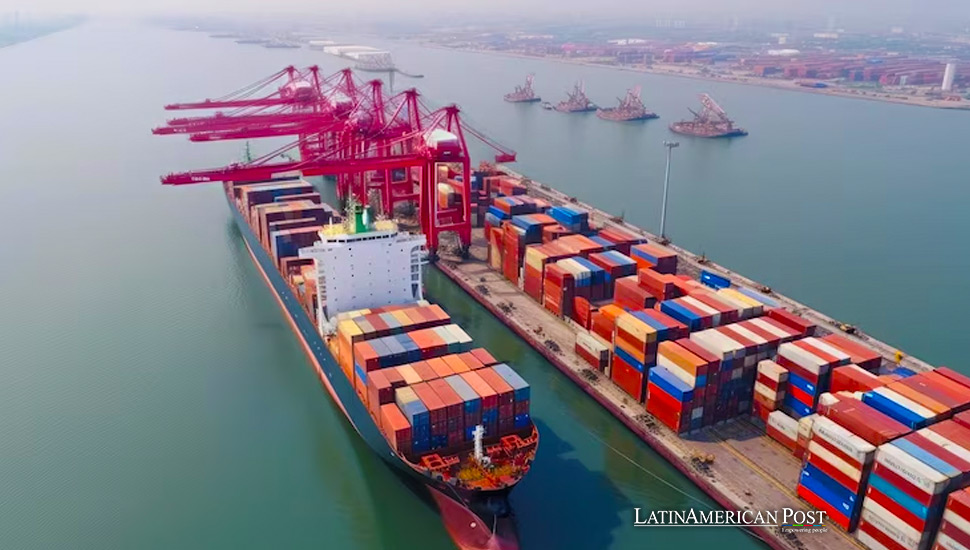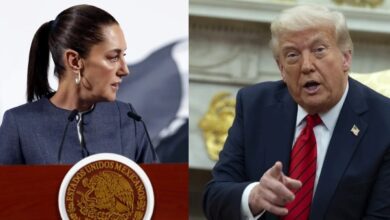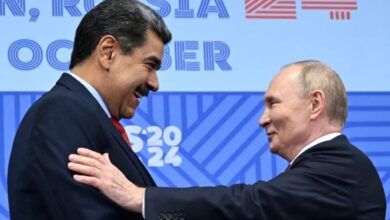Changes in US-Latin American Trade to Counter China’s Expansion

In a bipartisan effort, U.S. lawmakers have unveiled the Americas Trade and Investment Act, which aims to expand trade and investment with Latin America and the Caribbean to counter China’s growing influence. This landmark legislation could redefine economic relations in the Western Hemisphere.
In a significant move that signals a potential shift in the Americas’ geopolitical landscape, U.S. congress members from both sides of the aisle have introduced legislation poised to deepen trade and investment ties with Latin America and the Caribbean. This move, aimed at countering China’s expanding footprint in the region, heralds a new era of economic diplomacy that could profoundly change the Western Hemisphere’s financial and strategic dynamics.
A Bold Initiative to Reshape Economic Alliances
The proposed Americas Trade and Investment Act, articulated by Congresswoman María Elvira Salazar, presents a groundbreaking opportunity for Latin American countries to join the United States-Mexico-Canada Agreement (USMCA). This prospect could dramatically alter the trade landscape in the region. This initiative seeks to foster closer economic ties and encourage the return of American businesses to U.S. shores through a substantial financial package comprising $60 billion in loans and $10 billion in tax incentives.
Highlighting the cost-neutrality of the bill to U.S. taxpayers, Congressman Adriano Espaillat emphasized that the legislation would be fully funded by closing tariff loopholes long exploited by China to its advantage. This strategy underscores a significant pivot in U.S. policy, aiming to recapture economic ground while promoting a more equitable and sustainable trade ecosystem in the Americas.
A Strategic Counter to China’s Influence
The increasing presence of China in Latin America, through investments in critical infrastructure and strategic sectors, has raised concerns among U.S. policymakers about the implications for regional stability and U.S. interests. The Americas Trade and Investment Act represents a direct response to this challenge, aiming to solidify U.S. leadership in the hemisphere and offer an alternative to Chinese investments often criticized for fostering dependency rather than partnership.
China’s strategy to “penetrate and conquer the Western Hemisphere” by competing with American companies for control over ports, railways, airports, dams, and vital minerals, as noted by Salazar, underscores the urgency of the U.S. initiative. By strengthening trade relationships and offering viable economic alternatives, the U.S. seeks to counter China’s influence and promote a vision of mutual prosperity and respect for sovereignty throughout the region.
Economic and Social Implications for Latin America
The implications of the Americas Trade and Investment Act are far-reaching for Latin American countries. The legislation could spur significant economic growth, job creation, and infrastructure development by facilitating access to the USMCA and providing financial incentives for American companies to invest in the region. This, in turn, could address some of the root causes of migration by providing stable and well-paying jobs, thereby stemming the flow of migrants seeking better opportunities in the U.S.
The act’s emphasis on manufacturing jobs and strategic alliances highlights a recognition of the untapped potential within Latin America to become a critical player in the global supply chain. Countries like Ecuador, Peru, Bolivia, and nations in Central America stand to gain considerably from increased access to the U.S. market and the influx of American investment and technology.
A Call for Inclusive and Sustainable Growth
As the Americas Trade and Investment Act moves through the legislative process, it invites reflection on the importance of ensuring that the benefits of increased trade and investment are broadly shared. For Latin America, this means advocating for agreements prioritizing sustainable development, environmental protection, and labor rights, ensuring that economic growth does not come at the expense of social equity or ecological balance.
Also read: Water Scarcity in Latin America’s Megacities is a Growing Crisis
The bipartisan support for the bill, with Senators Bill Cassidy and Michael Bennet among its proponents, signals a recognition of Latin America’s strategic importance to U.S. interests and the necessity of adopting a collaborative approach to regional challenges. By focusing on economic integration and partnership, the U.S. and Latin American countries can build a more prosperous, stable, and interconnected hemisphere capable of facing the challenges of the 21st century.
A Vision for the Future
The Americas Trade and Investment Act represents a pivotal moment in U.S.-Latin American relations, offering a blueprint for a more integrated, prosperous, and secure Western Hemisphere. By countering external influences through economic empowerment and strategic alliances, the U.S. and Latin America can forge a partnership that benefits all parties involved and sets a new standard for international cooperation in the modern era. As the legislation progresses, engaging all stakeholders in shaping a future that reflects the shared aspirations and values of the Americas will be crucial.





